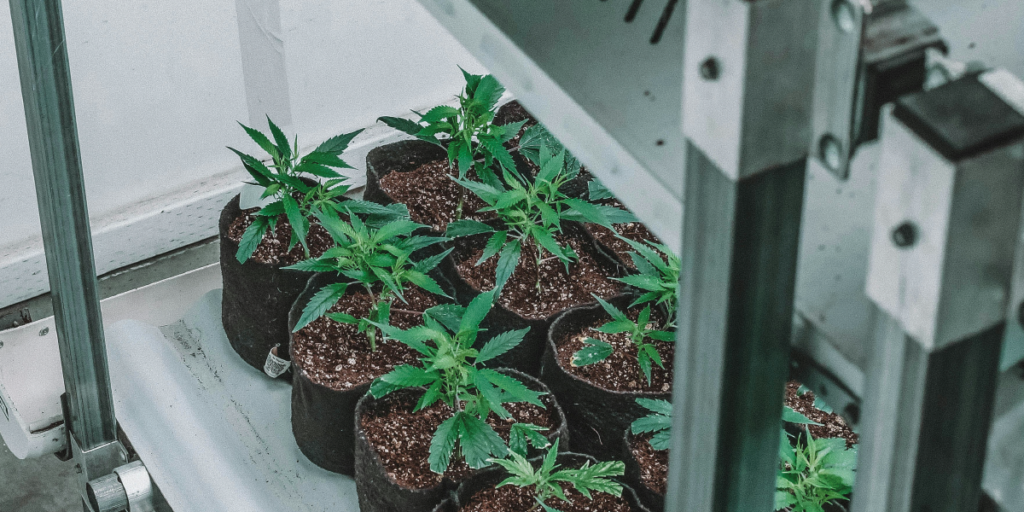The Ultimate Guide to Proper Sterilization in Cannabis Cultivation

Boosting Yields and Preventing Disease Outbreaks Through Effective Disinfection.
Sterilization is a pivotal process in cannabis cultivation that is often overlooked by novice growers. However, improper sterilization techniques can lead to devastating outcomes including fungal infections, bacteria outbreaks, reduced yields, and compromised plant health. This comprehensive guide delves into the critical importance of proper sterilization at every stage of the cannabis growing process. Follow along as we explore the role of sterilization, the risks of improper practices, effective techniques, and tips for optimal disinfection in cannabis cultivation. With the insights from this guide, you will be able to create a clean and disease-free environment for your plants to thrive in.
The Vital Role of Sterilization in Cannabis Cultivation
Sterilization involves eliminating harmful pathogens including fungi, bacteria, and mold spores that can severely compromise the health and potency of cannabis plants. Proper sterilization plays several crucial roles in cannabis cultivation:
– Creates a Pathogen-Free Growing Environment: Sterilization ensures no disease-causing microorganisms are present within the growing area or tools. This prevents the transmission of infections to plants.
– Prevents Disease Outbreaks: Effective sterilization techniques destroy common cannabis pathogens including powdery mildew, botrytis, root rot, damping off, and more. This maintains an optimal disease-free environment.
– Allows Beneficial Microbes to Thrive: Sterilization eliminates competition from harmful microbes, allowing beneficial bacteria and fungi to colonize plant roots and leaves. These boost plant health and growth.
– Ensures High Potency Yields: Pathogen-free plants can achieve their full genetic potential in terms of cannabinoid and terpene production. Proper sterilization leads to higher yields of top-shelf cannabis.
– Promotes Plant Health And Vigor: Sterilization reduces plant stress and prevents nutrient deficiencies caused by root damage from pathogens. Plants grow stronger and more resilient.
– Prevents Cross-Contamination: Sterilizing tools, containers, and surfaces prevents the transmission of diseases between plants. This stops localized outbreaks from spreading.
Clearly, effective sterilization is foundational to the success of any cannabis cultivation operation. But what happens when sterilization is ignored or implemented improperly?
The High Costs of Improper Sterilization in Cannabis Cultivation
Failing to properly sterilize the cannabis growing environment and tools can lead to utter disaster. Here are some of the major risks:
Catastrophic Disease Outbreaks
Without sterilization, plant pathogens rampantly multiply and infect crops. Powdery mildew, a fungal infection, can decimate cannabis plants within days. Bacteria like Pseudomonas cichorii also thrive and create massive damages. These outbreaks can quickly destroy entire grows.
Reduced Yields
Sick plants expend energy fighting infections rather than producing cannabinoids and terpenes. Pathogens also damage roots, reducing nutrient absorption from the soil. All these factors limit yield quantity and quality. Proper sterilization optimizes yields.
Weak, Vulnerable Plants
Diseases create physical damage within plants in the form of necrotic lesions, rotting tissue, stunted growth, and more. Plants become highly vulnerable to stresses and further attacks from pests. Weak plants produce poor harvests.
Destruction of Beneficial Microbes
Harmful bacteria and fungi release toxins that kill off beneficial microorganisms in the growing medium and on leaves. This leaves plants deprived of symbiotic microbes that enhance their health and growth.
The risks of improper sterilization practices clearly demonstrate why effective disinfection protocols are absolutely crucial. Next, let’s explore the key techniques cannabis cultivators need to master.
Effective Sterilization Techniques for Cannabis Cultivation
To create an optimized growing environment, cannabis growers need to sterilize propagation tools, containers, surfaces, water, and the grow area itself. Here are the top techniques to implement:
Chemical Sterilization
Chemical agents such as 96% alcohol, calcium/sodium hypochlorite, quaternary ammonium, hydrogen peroxide, peroxyacetic acid can be used to disinfect surfaces, tools, irrigation lines, reservoirs, etc.
UV Radiation
UV lamps producing light at 253.7 nm wavelength can kill pathogens in seconds. Ideal for sterilizing grow rooms, greenhouse air, and irrigation water.
Vaporized Hydrogen Peroxide (VHP)
VHP gas diffuses through air to decontaminate entire grow rooms. It breaks down to water and oxygen leaving no residue.
Biological Sterilization
Introducing beneficial microbes can outcompete and eliminate harmful ones through “competitive exclusion.” Effective options are Trichoderma fungi and Bacillus bacteria.
Following Best Practices for Optimal Sterilization
To implement these techniques safely and effectively, cannabis growers need to follow these best practices:
– Sterilize regularly to prevent pathogen build-up. Disinfect before starting a new crop.
– Clean all tools and surfaces with soap before sterilizing. Remove dirt and debris first.
– Use sterile containers and trays or disinfect used ones thoroughly.
– Sterilize irrigation lines between cycles. Use UV treatment or chlorine shocks.
– Monitor water quality and sterilize reservoirs frequently. Keep pH between 5.5 and 7.
– Use sterile clones, seeds, and avoid cross-contamination during propagation.
– Sterilize greenhouse surfaces, floors, and tools weekly. Schedule deep disinfection between grows.
– Allow proper contact time for chemical disinfectants to be effective.
– Ensure proper ventilation and PPE when using chemical sterilizing agents.
By diligently following these guidelines, cannabis growers can create a clean cultivation environment optimal for plant health and maximizing yields.
Conclusion
In the world of cannabis agriculture, failing to properly sterilize leads to disaster through disease outbreaks, reduced yields, and vulnerable plants. By contrast, effective sterilization techniques eliminate pathogens allowing plants to thrive to their full genetic potential. The key techniques include heat, chemical, UV, and biological sterilization. Following best practices ensures robust protocols are in place at every stage from propagation to harvest. With these comprehensive insights, cannabis cultivators can implement sterilization programs that lead to bountiful harvests of healthy, high-potency cannabis.






Responses